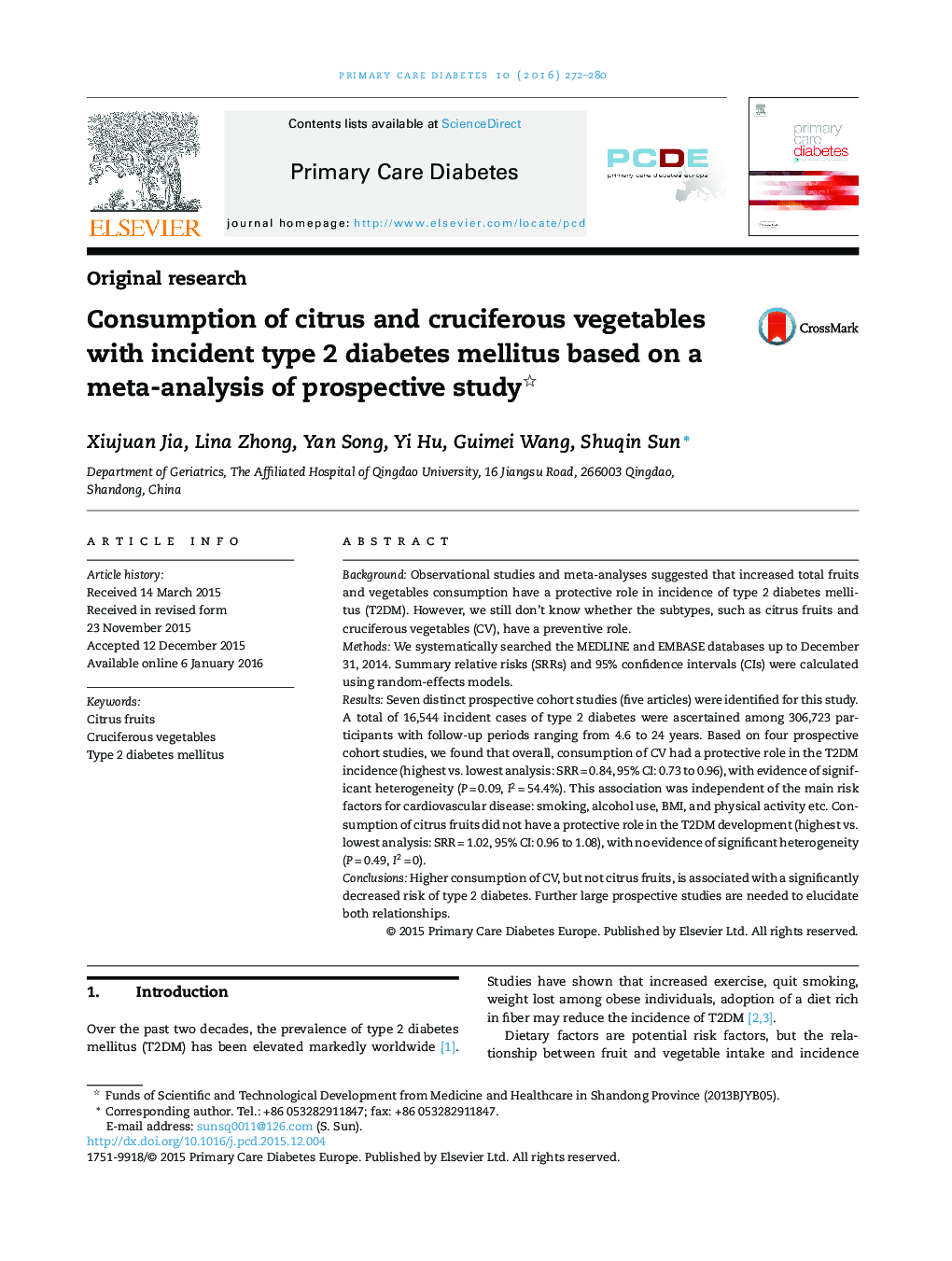| Article ID | Journal | Published Year | Pages | File Type |
|---|---|---|---|---|
| 2680722 | Primary Care Diabetes | 2016 | 9 Pages |
•A meta-analysis of seven prospective studies was performed.•Evaluate the association of citrus and cruciferous vegetables and type 2 diabetes.•Intake of citrus fruits was not associated with risk of type 2 diabetes.•Cruciferous vegetables intake was inversely associated with type 2 diabetes risk.
BackgroundObservational studies and meta-analyses suggested that increased total fruits and vegetables consumption have a protective role in incidence of type 2 diabetes mellitus (T2DM). However, we still don’t know whether the subtypes, such as citrus fruits and cruciferous vegetables (CV), have a preventive role.MethodsWe systematically searched the MEDLINE and EMBASE databases up to December 31, 2014. Summary relative risks (SRRs) and 95% confidence intervals (CIs) were calculated using random-effects models.ResultsSeven distinct prospective cohort studies (five articles) were identified for this study. A total of 16,544 incident cases of type 2 diabetes were ascertained among 306,723 participants with follow-up periods ranging from 4.6 to 24 years. Based on four prospective cohort studies, we found that overall, consumption of CV had a protective role in the T2DM incidence (highest vs. lowest analysis: SRR = 0.84, 95% CI: 0.73 to 0.96), with evidence of significant heterogeneity (P = 0.09, I2 = 54.4%). This association was independent of the main risk factors for cardiovascular disease: smoking, alcohol use, BMI, and physical activity etc. Consumption of citrus fruits did not have a protective role in the T2DM development (highest vs. lowest analysis: SRR = 1.02, 95% CI: 0.96 to 1.08), with no evidence of significant heterogeneity (P = 0.49, I2 = 0).ConclusionsHigher consumption of CV, but not citrus fruits, is associated with a significantly decreased risk of type 2 diabetes. Further large prospective studies are needed to elucidate both relationships.
